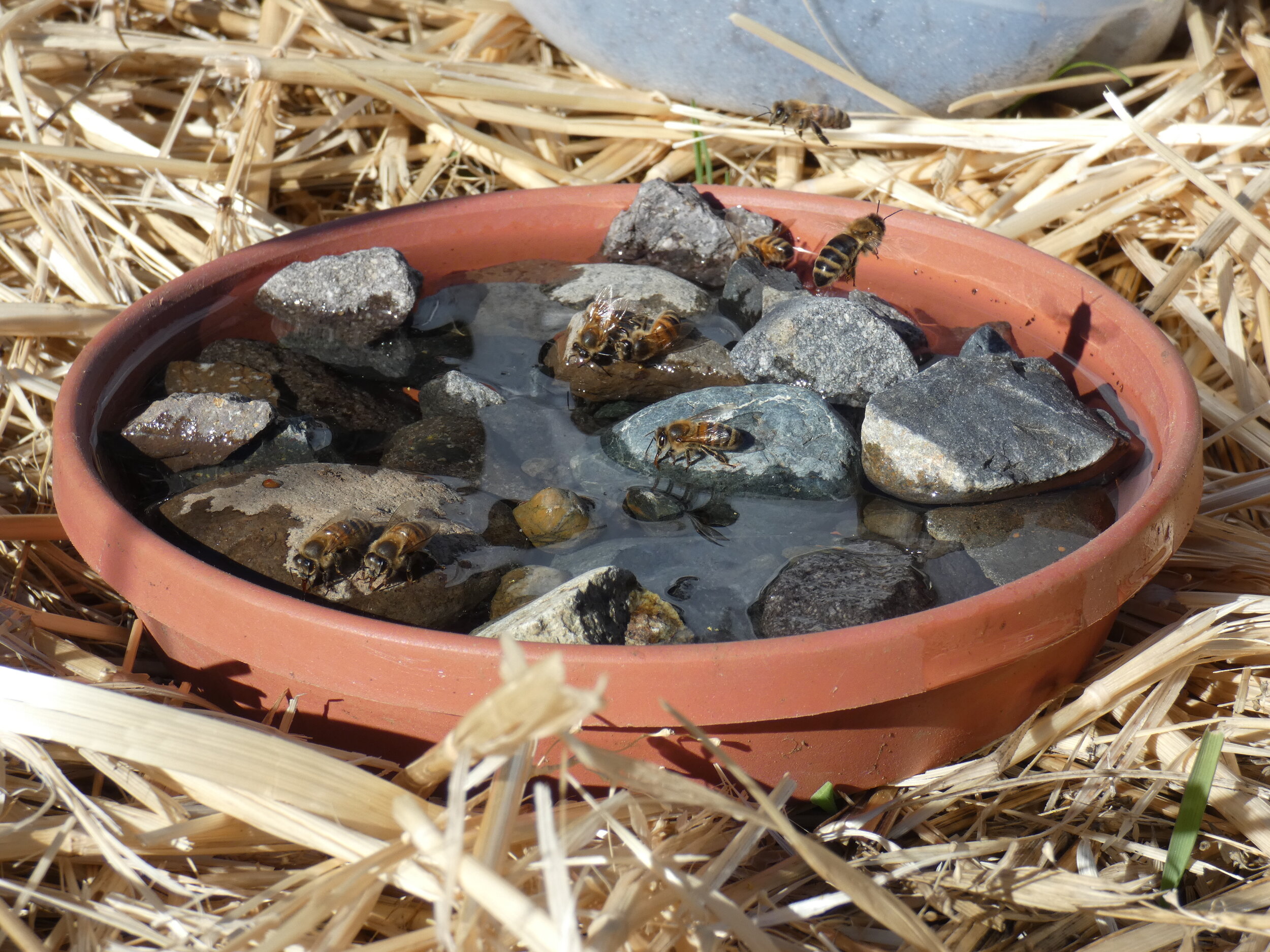ThermaCork Hives Become Bees' New Sweet Spot
/This is a guest post written by bee enthusiast and beekeeper Liz Miller. Last year, Liz shared the hives she made with ThermaCork. In this blog post she provides an update on her cork hive performance as well as sharing the cork hive designs of other beekeepers.
I’ve been a hobby beekeeper for several years, and I’m always looking for ways to help my bees survive the myriad of challenges they face. To that end, I’ve tried to design hives that mimic the honey bee’s natural log homes as much as possible. Back in January, I wrote a guest post for Small Planet Supply about our experiments keeping honey bees in cork insulated beehives.
I stumbled on Thermacork while searching for a natural alternative to foam insulation for my beehives. I had been building hives out of two inch thick lumber, but it was heavy and didn’t really offer that much more insulation despite its additional weight and expense. After using Thermacork on my hive’s roof, I thought, “Why not coat the whole hive with this wonderful stuff?” So I did, and Cork Hives was born.
Now that our bees have lived in their Cork Hives for over a year, we’re better able to assess the advantages and disadvantages of our design. We had better winter survival rates than the Washington average, which a recent survey calculated at 50%. 80% or our hives made it through the winter, and we were even happier when the one hive that perished was re-occupied by a swarm in May.
In watching our bees over winter, we noticed that the bees in cork-insulated hives were able to fly in colder weather than our bees in wooden hives - which is important to an animal that needs to go outside to poop
As the weather started to warm in the spring, the bees in Cork Hives were quick to start bringing in that first Alder and Hazelnut pollen, and thus had plenty of food for a new generation of bees. Though it was too cold to peek inside, I imagine their cozy home made it easy for them to keep their brood (aka baby bees) at just the right temperature, which is critical to hatching our healthy and vigorous youngsters.
None of the hives fell victim to the infamous (in beekeeping circles anyway) “spring dwindle”: when a colony that makes it through winter fails to make enough baby bees in the spring to thrive, and eventually shrinks to nothing. And none of our hives perished over the summer of 2019, a summer which had the highest recorded honey bee losses on record.
Which brings us to a possible disadvantage of the Cork Hive, depending on your point of view: the Cork Hive makes for happy bees, and bees are happiest when they are making more bees. In our experience, the bees in our Cork Hives reproduce prolifically. The hives are small, in keeping with researcher Thomas Seeley’s recommendations for optimal bee health. If you keep bees in a small, insulated hive, be prepared with extra equipment to make splits - dividing one hive into two or more hives - or your bees will swarm, possibly terrifying your neighbors. On the plus side, if you don’t want more bees yourself it’s not hard to find an aspiring beekeeper who’d be happy to adopt your extra bees.
The best thing about starting Cork Hives has been connecting with other beekeepers who are also experimenting with bee friendly hive designs. Managed bees and even wild honey bees the world over are benefiting from the insulation power of renewable, non-toxic, all-natural cork!
Guy Thompson, of the UK, has been using both cork-lined and cork-clad beehives for several years. He’s called the use of cork in his hives “transformative” for the bees’ health. He keeps his bees in Warre style hives - a vertical top bar hive that allows the bees to build comb however they choose.
Gervaise Evans of the UK used cork to make an insulated brood box (the section of the hive where the queen lays her eggs) for use with his conventional hive. It’s his first year using cork, but as you can see from this photo, even by May his bees were quite prolific!
William Erpel of Georgia, USA builds amazing cork-lined hives. Equipped with extra long frames and encased in cozy cork insulation, he’s found the bees can over-winter in his hives without supplemental feeding. He was so pleased with his initial results he decided to make his hives available for sale at https://beehavenga.com/.
As one can imagine, the harsh climate of Alaska is particularly hard on honey bees, making it very difficult for them to survive over winter. Beekeeper Douglas Stephens is rising to the challenge with his beautiful cedar, cork-lined hives. Boasting two inch thick Thermacork insulation on the inside and extra long frames, Douglas’s bees will have plenty of stores and warmth when the cold weather comes.
The European honey bee, as you can surmise from its name, is native to Europe, and faces similar threats to its well-being in its native range as it does in North America: pesticides, habitat destruction, the varroa mite (a parasite introduced to European Honey bees in the 1960s), and other pressures. Wild nests of European Honey bees are becoming increasingly rare, but people are making an effort to save them.
Joe Ibbertson of the UK uses cork to repair damaged wild honey bee nests. The cork provides the insulation that the tree formerly did, and because it’s easy to cut, he can fit the cork into the tree cavity’s odd shaped crannies. When Joe is done, the bees readily seal any small gaps with propolis, a spackle-like substance they make from plant resins, restoring their nest to its former warm and defensible state.
There’s one thing my fellow-cork hive enthusiasts have in common: they take a holistic approach to honey bee health. In addition to insulating their hives, they recognize the benefits of propolis, that caulking the bees make, for boosting the honey bee immune system. They’re forever experimenting with ways to make the bees happier - various entrance sizes and configurations, different hive volumes, cork on the inside vs the outside, the list goes on and on.
With so many different environments and sub-species of honey bee, we’ll always have more to learn.
HEX SWARM
GUY THOMPSON
GERVAISE EVANS
WillIAM ERPEL
Douglas Stephens





















